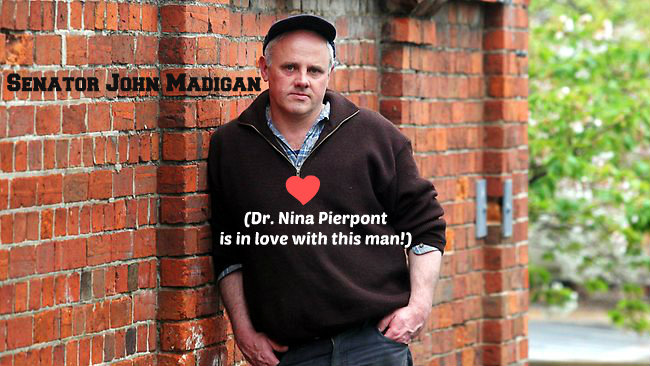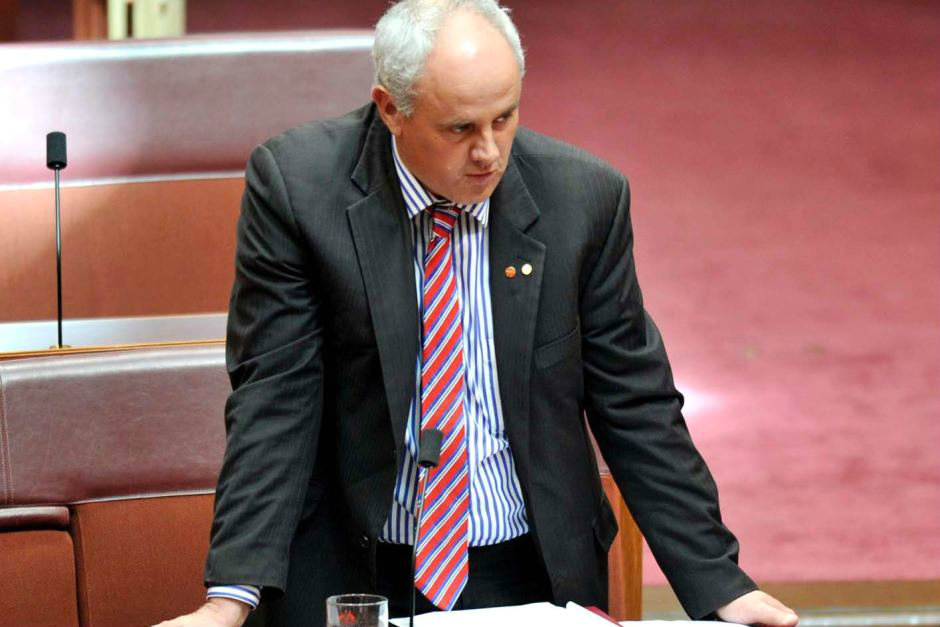
—Noel Abbott (12/16/13)
They came
to this quiet community
first the smooth talking
carpetbaggers
with their glib promises
of abundance
of how these machines
would save the world
The big lies
told with conviction
the big lies
Then the turbines
huge Industrial Machines
In between
a community divided
part of the plan
a war without guns
fought with the weapons
of treachery, lies, lobbyists, lawyers
No match for this armada
most small town boards
no time to make the wise long-term commitments
that their positions called for
To go to war with the very landowners
who may have built their towns
who have lived there for generations
“Harvest the Wind”
“Free Cash Crop”
“Save Your Farms”
“Free Money”
these seducers whispered
Then the machines
went up
and turned the world black
for so many
a quiet town
now an industrial wasteland
for so many
Skies still bright
but darkness in the lives
of those affected
And the invaders
many from foreign lands
reaping tax benefits
from our hard-earned hands
without our consent
and often without our knowledge
No sleep
dizziness
headaches
loss of concentration
personality change
anger, grief
Wind Turbine Syndrome
Too late, the mountains gone
skylines gone
Let’s stop this madness
wake up!
I tell you this
this policy
driven by a triangle of bad laws-lobbyists-vested interest
Renewable Portfolio Standards (set by whom?)
and tax rebates are reaping the harvest
by raping the land
How could it be
that something so pervasive
is suicidal policy?
Look at war and ask the same question
Look for yourself
educate yourself
to the real facts
ask these questions:
Has one of these Industrial blights
ever meant the removal
of a single coal fired, oil fired, nuclear, or gas fired plant?
Not!
Time to wake up
“But we have to do something”
the critics and spin artists counter
If that something
is to drive yourself
off the edge of a cliff faster, stop!
It takes courage
to admit
that something so widespread
is suicidal policy
but it is
Energy efficiency will help
more efficient grids will help
localizing power will help
changing the laws will help
End this useless suffering.

.
— Wisconsin State Senator Frank Lasee, “Take the politics out of wind power,” WisOpinion (12/13/13)
Last Christmas, I was grateful the Public Service Commission (PSC) funded a study on the connection between wind turbine noise and the illnesses people who live near the towers are consistently reporting. The scientists agreed and their finding was clear that more studies needed to be done.
The pieces were finally in place to definitively answer the health question – are the wind turbines making people sick?
One year later we still don’t know. Why? In spite of its own recommendation of more studies, the PSC has shelved the report for a year and done nothing.
Nothing.
No one from the PSC has made a phone call or sent an e-mail to check on the more than fifty people in my district who have documented health problems that started when those massive wind turbines were built too close to their homes.
The pro-wind forces want you to believe the wind turbines are good for the environment because, after all, they’re “green” and nothing green could ever cause a problem.
If only that were true.
Let’s start with a report from the World Health Organization. By any reasonable standard the WHO is a nonpolitical research group dedicated to health. Their report found that low frequency noise generated by the turbines was, “sufficiently strong to warrant immediate concern.” The WHO report is just one of dozens raising concerns about the health effects of wind power.
“Immediate” is the key word in the previous paragraph. More than ten years ago the World Health Organization was one of the first to raise the alarm – ten years ago – and the Wisconsin Public Service Commission ignores its own report for a year?
Not only does the PSC ignore its own work, the pro-wind lobby continues to argue there are no “legitimate” reports questioning the safety of wind turbines.
If the PSC wants to learn about the health problems connected to wind turbines all they have to do is make a telephone call.
Your neighbors have been hurt by these wind turbines. They are farmers, housewives, and their children. One or two cases of health problems could be dismissed as a fluke but dozens? Three Brown County families have abandoned their homes because the symptoms are that severe. These are good and honest people and their only agenda is to get their lives and health back again.
In Massachusetts, a judge recently ruled that a utility company had to dramatically scale back its operating hours because homeowners were suffering, “irreparable physical and psychological harm.”
Public Service Commissioners have the rare chance to show both courage and leadership in this debate. Stop ignoring the elephant in the room, follow your own recommendation, and commission a new study investigating the link between wind turbine noise and the people who are ill around them.
Set the gold standard for safety and show us you think people are more important than politics.
Ask the questions.
Don’t make the people of northeastern Wisconsin wait another year for Christmas.

Editor’s note: The following amazing speech (click here for PDF) was delivered by Senator John Madigan (Australian Federal Senate) on the Australia Federal Senate Floor on December 10, 2013. Madigan’s speech applies to every nation and every state and province that promotes wind energy. This website has been documenting this fraud and malfeasance — and scandalous cover-up of Wind Turbine Syndrome — for 9 years.
Senator Madigan “gets it”!
In South Africa, Nelson Mandela has died. A phenomenal leader, a man of phenomenal courage. Australia has produced a man worthy to walk in Mandela’s shoes. (Contact him personally, here, and tell him as much.)
.
In 2002, well before Professor Simon Chapman’s nocebo effect and five or more years before the Waubra Foundation was set up, people in the once quiet seaside town of Toora in South Gippsland started complaining about noise nuisance. They had not been visited by anybody stirring them up or telling them that one day they might feel sick. What had happened is the construction of a wind farm near this little town by the Queensland government’s Stanwell Corporation.
Toora was one of the earliest wind farms in Australia. The people reported their complaints and illness to the local GP, Dr David Iser. He had not been visited by any anti-wind-farm activists either. He was just the local GP doing his job on Gippsland’s beautiful coast and now wondering why so many people were turning up in his surgery complaining about noise and reporting various symptoms.
South Gippsland Shire Council started receiving complaints too. In 2005, they commissioned an independent review of the noise-monitoring data collected at Toora by the Stanwell Corporation. The review found all sorts of problems with the way the noise monitoring was being conducted that distorted and limited the data. It also found that the wind farm was breaching Victoria’s wind farm noise standard. The complaints continued, more reviews were done and nothing improved.
In 2007, or thereabouts, the local council stopped checking the noise monitoring at Toora. Over the next couple of years, the operator bought out some of the complainants and their houses were removed and destroyed. Other complainants were paid out too. Gag money coupled with legally binding confidentiality agreements were papered over the problem, silencing the complaints. Yet Toora wind farm continued churning out noise into the local community and still does to this day. What happened at Toora was the pattern of the wind industry’s behaviour that would be repeated across Victoria—and probably Australia.
Today I tabled a petition from more than 1,000 people across rural and regional Australia. They are concerned about noncompliant wind farms rorting the renewable energy certificate system being allowed to operate when they are noncompliant and causing a range of harms and costs. Wind farm planning permits stipulate a noise standard. If residents near a wind farm make complaints about noise, this triggers a compliance pathway where testing occurs, and then more testing occurs. Wind farm planning permits then stipulate turbines in noncompliant wind farms to be shut down and removed, yet Victoria’s regulator has never ordered these final steps to be taken. In fact, Victoria’s regulator for large wind farms, the Victorian Minister for Planning and his department, the regulator for small wind farms and local councils have never publicly declared a single Victorian wind farm to be in breach of the noise standard stipulated in their planning permits—not one.

Over the years, thousands of complaints have been made by local residents about noisy wind farms scattered across Victoria, yet the regulators have not publicly declared one wind farm to be noncompliant. Why is that? How could that be? To answer those questions I turn to Waubra wind farm, owned by ACCIONA but operating as Pyrenees Wind Energy Development. Waubra is Toora wind farm on steroids. It is the case study of regulatory failure at state and Commonwealth levels. Located northwest of Ballarat, Waubra is a large facility comprising some 128 turbines spread over two municipalities. It started operating in 2009.
To understand what is causing regulatory failure, we need to part the curtains and look behind the scenes. Over the last 12 months, my office has used freedom of information to access various documents from the Victorian Department of Planning and the Commonwealth’s Clean Energy Regulator. While the Minister for Planning and his department have never formally and publicly declared Waubra wind farm to be noncompliant, behind the scenes a different story was, and still is, being told.
Tonight I put on record some excerpts from those FOI documents, because this story is not just about Waubra breaching its planning permit conditions; it is about a culture of noncompliance arising from systemic regulatory failure that impacts every wind farm in Victoria. The authors of this story are the wind farm companies, the Victorian Planning Minister and his department, the Commonwealth’s Clean Energy Regulator, local councils and others in the regulatory community who are not paying attention. This story involves the pain and suffering of little people living in rural Australia, environmental damage, fraud on a grand scale, deception, lies and concealment.
Sadly, it is not a new story. There have been too many examples of governments and corporations colluding to circumvent regulation and accountability, harming and stealing from people along the way. What is different about this story, however, is the optimism and high regard felt toward this particular technology. Wind farms were believed to solve problems, not create them. Wind farms and the wind energy industry were promoted as the shiny white knights riding out across the countryside, abating pollution and befriending all who looked upon them. While this fairy tale captured our collective hope that wind farms would solve our energy needs, minus pollution, it has blinded us to the technology’s problems.
Our short-sightedness has been added to by governments hiding information from the public at the same time as they fail to regulate. We have been misled by an industry that engages in sophisticated public relations and spin. We have trusted an environmental movement whose support has been manipulated by the wind industry and its master, the fossil fuel industry.
Let’s go behind the curtains to see the real story. Less than two weeks after the November 2010 Victorian state election won by a coalition government, the newly appointed Minister for Planning, Matthew Guy, requested a briefing from his department about compliance issues at ACCIONA’s Waubra wind farm. He was advised by his department:
… the Department of Planning and Community Development—
DPCD for short—
requested Pyrenees Wind Energy Development—
PWED for short—
to provide a copy of the complaints register required under the planning permits.
This complaints register indicated that 63 complaints had been received by PWED. DPCD is aware that complaints have also been received by the EPA and both local councils. Some of these complaints are not assessed as part of the noise compliance report.
DPCD understands that approximately 11 dwellings located within 1.5 kilometres of the Waubra wind farm have been vacated with noise cited as the reason. The wind farm proponent has purchased eight of these properties.
A recent site visit by the Joint Municipal Association of Victoria and DPCD working group on wind farms to the Waubra wind farm reported significant audible noise impact on an adjacent dwelling. The occupiers of this dwelling have recently vacated the premises due to this noise issue. This dwelling is not assessed as part of the noise compliance report.
The ministerial briefing also advises:
… an independent noise construction noise monitoring program was to be undertaken to the satisfaction of the Minister for Planning. PWED submitted the report to the Department of Planning and Community Development on 8th October 2010.
On 13th October 2010 DPCD provided a copy of the report to the Environment Protection Authority for preliminary comment. Preliminary advice from the EPA indicated several concerns with the report.
On 15th October, 2010 DPCD commissioned Heggies Pty Ltd. (now called SLR Acoustic Consultants) to prepare an independent technical review of the noise compliance report. On 1st December, 2010 the final peer review was provided to DPCD.
This briefing note proposed that Minister Guy tell PWED their postconstruction noise compliance assessment was not to his satisfaction, that they had breached condition 16 of the planning permit and needed to run some of their turbines in noise optimisation mode. He was advised to tell them to document an operating program that would result in compliance with the applicable noise standards.
On 10 December 2010, four days after being briefed by his department, Minister Guy wrote to PWED in a letter that identified multiple breaches of its planning permits:
The complaints register required under Condition 15 of the planning permits should have been assessed to establish whether complaints received were investigated in terms of potential non compliance and the results of any investigation … I am not satisfied with the independent post construction noise monitoring program required by condition 17 of the relevant planning permits.
A response to the issues and concerns raised in this letter are required from PWED, including the review of the Waubra post-construction noise compliance report within 28 days of receipt of this letter in order for me to be satisfied under the permit conditions.
Further, the report details that the operation of the facility does not comply with the relevant noise standard at several dwellings.
I am therefore not satisfied in accordance with Condition 14 that the operation of the facility complies with the relevant standard in relation to these dwellings. In accordance with Condition 16 I request PWED to noise optimise the operation of the relevant turbine or turbines.
I require PWED to document the operation of the wind farm in a noise optimised mode … I expect that this program will respond to any omissions or additional non compliance identified during the revision of the report.
In 2010 we see a newly elected government and its planning minister taking advice from his department about the noise noncompliance of Waubra wind farm. The advice contained in these and other briefing notes are not the rants of a department infested with climate change sceptics or infected with the nocebo effect. Instead, we see a regulator giving the appearance of doing its job. As time rolls on the number of ministerial briefing notes about Waubra noncompliance grows. Eight months later, we catch up again on the DPCD’s advice to its minister. On 22 August 2011 we learn, and I quote:
SLR Acoustic Consultants identified a number of limitations in the Marshall Day Acoustics post construction noise assessment report. These have been communicated to the wind farm operator who has advised you that it has purchased two additional dwellings and made a commitment to operate the wind farm in noise management mode.
Noise management mode allows certain turbines to be selectively modified to reduce rotation speed or to shut down turbines by sector. These actions have not prevented the continuation of noise complaints and the Department considers that operating the facility in noise management mode will not enable the facility to meet the application 35dBA noise limit …
The ministerial briefing note recommends the minister request that the operator test for special audible characteristics and provide another report, plus maintenance records, and updated information from the complaints register. If the operator refuses, the briefing advises that the minister could call upon the EPA to order the operator to hand over the documents.
Ominously, the rest of the briefing note is redacted; the department’s advice on the next steps in the compliance pathway have been removed from sight. What do the planning permits say must happen next?
They require the minister to direct the offending turbines to be shut down and removed by the operator. As just demonstrated in the department’s own documentary record, the minister had reached that point in the compliance pathway by August 2011. We also know that in December 2013 Waubra’s wind turbines are still operating in gross non-compliance of the wind farm’s planning permits. There is no evidence to suggest that Waubra’s turbines have ever been noise optimised. We have also confirmed that no compliance notice has ever been issued by the DPCD or the EPA against Waubra. And we know that complainants to ACCIONA are now being given reference numbers that indicate they have received more than 1,300 noise related complaints since mid-2010. So what happened between then and now? If the minister has not taken the prescribed steps, why not?
On 27 March 2013 I received a letter from Mr Andrew Tongue, the then Secretary of DPCD. He has since become the Secretary of the Department of Premier and Cabinet. His letter advised me:
… the minister for Planning has not determined whether the wind farm is or is not compliant with the relevant planning permit (sic). The minister or the department have never stated that the Waubra wind farm is not compliant with the current planning permit.
So here we have a case where you are neither compliant nor non-compliant; you are in the so- called demilitarised zone. Mr Tongue goes on to reveal that the DPCD, the EPA and the operator have been toying with a new noise-testing methodology. They were and are hunting around for a noise-testing methodology that will magically make Waubra appear to be compliant.
Since 2011 most of the public servants who had been advising Minister Matthew Guy have been moved away from wind farm regulation. I understand their roles have been centralised in the hands of one gentleman known far and wide for his skills at playing games and hiding information. I think the Australian public should know that before I received Mr Tongue’s letter, it had already been emailed to ACCIONA. It was emailed to Ms Lisa Francis, senior manager at ACCIONA, by Mr Paul Jarman, Assistant Director, Regional Projects, Planning Statutory Services, DPCD. He emailed the letter to Ms Francis, on the day the original hard copy was posted to me, with a message to her that read:
I promised you a copy of the letters once sent. Here they are.
The other letter he is referring to was sent by DPCD’s Mr Tongue to then House of Representatives member Mr Alby Schultz. Ms Francis got a copy of that letter before Mr Schultz did.
ACCIONA’s Ms Lisa Francis emailed my office telling me to expect the letter from DPCD’s Mr Tongue. She was not doing me a favour so much as delivering me a message that DPCD was ACCIONA’s friend; DPCD would look after ACCIONA before it looked after me and the constituents being harmed by non-compliant wind farms turning to me for help. The relationship between DPCD and ACCIONA is so cosy that, three years after he was first advised by his department about Waubra’s non-compliance, Minister Guy still has not formally made a decision. It is so cosy that I have been confronted with almost 12 months worth of obfuscation, being ignored, my staff treated with open contempt by DPCD, public documents being hidden, and planning permit documents withheld courtesy of Minister Guy and his servant Mr Jarman.
As recently as last week, Minister Guy responded to a letter I had sent three months ago in which he infers that his ALP predecessor had privately accepted ACCIONA’s own assessment that Waubra was compliant. It is another too cute answer that betrays the cosy relationship between the operator and the Victorian government, regardless of the political party. Minister Guy, his department and the wind industry are playing games, hiding the truth while people are being driven out of their homes.
Victoria’s wind industry is churning out multiple millions of dollars worth of renewable energy certificates it is not entitled to and is being allowed to rort the REC and LRET systems. Banks and superannuation funds are lending billions of dollars for the construction of wind farms, exposed to serious risk arising from the planning permit non-compliance being orchestrated by the wind industry and its public servant, Minister Matthew Guy. Is the wind industry telling its financiers that they are funding wind farms that breach their planning permit conditions? I take this opportunity to forewarn Australia’s financial institutions: you better start doing your homework because the unfettered behaviour of this industry is risking your jobs, your investment decisions and the billions you have poured into this industry.